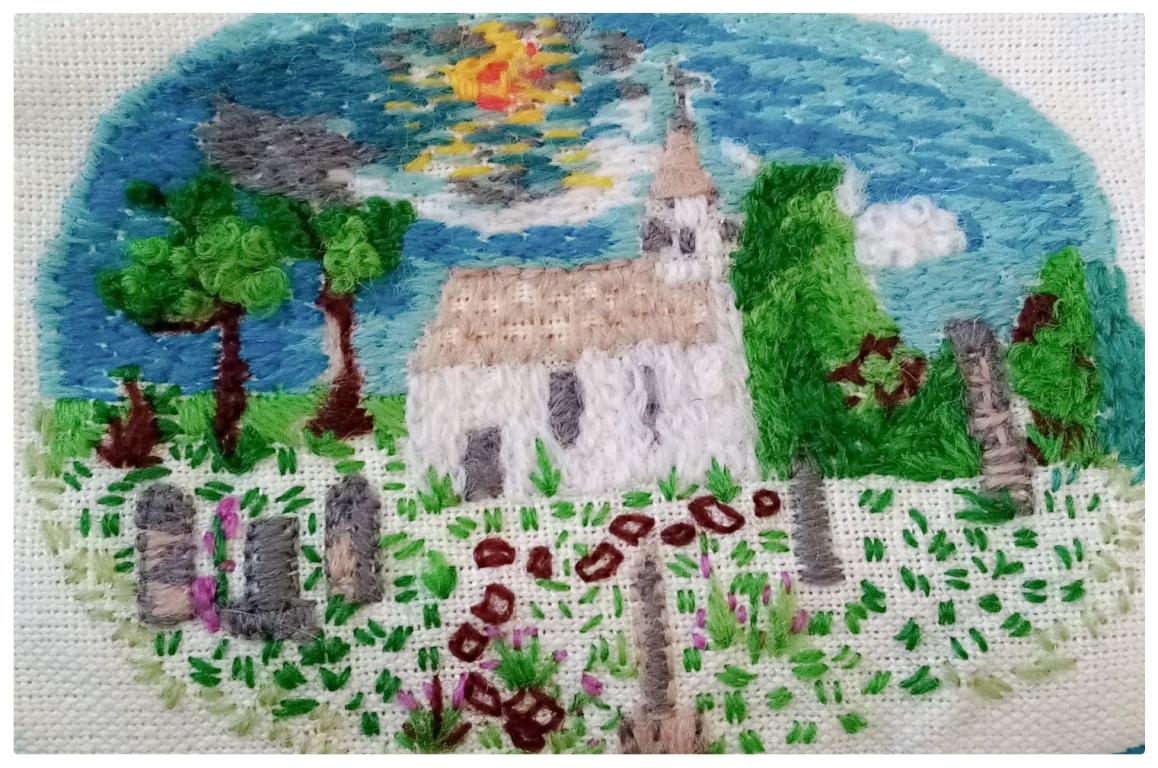
Kirkhill and Mausoleum
By Karen Lomax
 A homage to the fascinating history of Wardlaw Mausoleum at Kirkhill
A homage to the fascinating history of Wardlaw Mausoleum at KirkhillImage provided by Karen Lomax
Kirkhill is my favourite place and my home. My journey stone is of the Wardlaw Mausoleum depicting the families that lived here, travelling far and wide, but never forgetting their roots. Originally St Mary’s Church, it was re-built in 1634 for the Lovat Fraser family, but older remnants date to medieval times with one window thought to date to 1341.
The village of Kirkhill, formed in 1618 by the union of 2 parishes of Wardlaw in the west and Farnua in the east. In the Wardlaw manuscript James Fraser (circa 1674) describes it as:
...that beautiful hillock, which, looking down upon the rich plain of Lovat, was its ward-law or watch-hill in times when watch and ward were necessary.
The hill has amazing views over the Beauly Firth and beyond to the table top mountain of Ben Wyvis. It has been fascinating to follow the opening of the coffin and DNA analysis to find out if the remains are Simon Lovat the “old fox”, after he was beheaded at the Tower of London. Follow the link below to hear all about this story.
The mausoleum fits into the emigration tapestry panel that our Kiltarlity group has stitched. Having a Guyanese Aunt, I was interested in researching this area of the world and found David Alston’s (2015) research. So many Guyana towns have Highland place names. The Frasers were one of the families with substantial plantation interests in Guyana. With capitalism and slavery at its heart, it is a disturbing reality and as Alston states:
...cannot be airbrushed from history.
EXPLORE MORE WITH THE LINKS BELOW
Discover more about Wardlaw Mausoleum here
For more information on the cemetery at St. Mary's Church click here
To read a digital copy of the Chronicles of the Frasers click here
Many thanks to Karen Lomax for sharing with us the story behind her journey stone, created as part of the Tapestry of the Highlands and Islands.
WHAT IS A JOURNEY STONE?
Prior to the beginning of the stitching of each tapestry panel, each stitcher of the Tapestry of the Highlands and Islands was tasked with telling their interpretation of the 'Spirit of the Highlands and Islands' within a blank outline of a stone. The possibilities were truly endless - is it represented in the land? The people? A historical site? A favourite memory?
In any case, each journey stone represents the connection between each individual stitcher, their story, and their own sense, or 'spirit', of place. Discover more of the stories behind the journey stones of the Tapestry of the Highlands and Islands here.